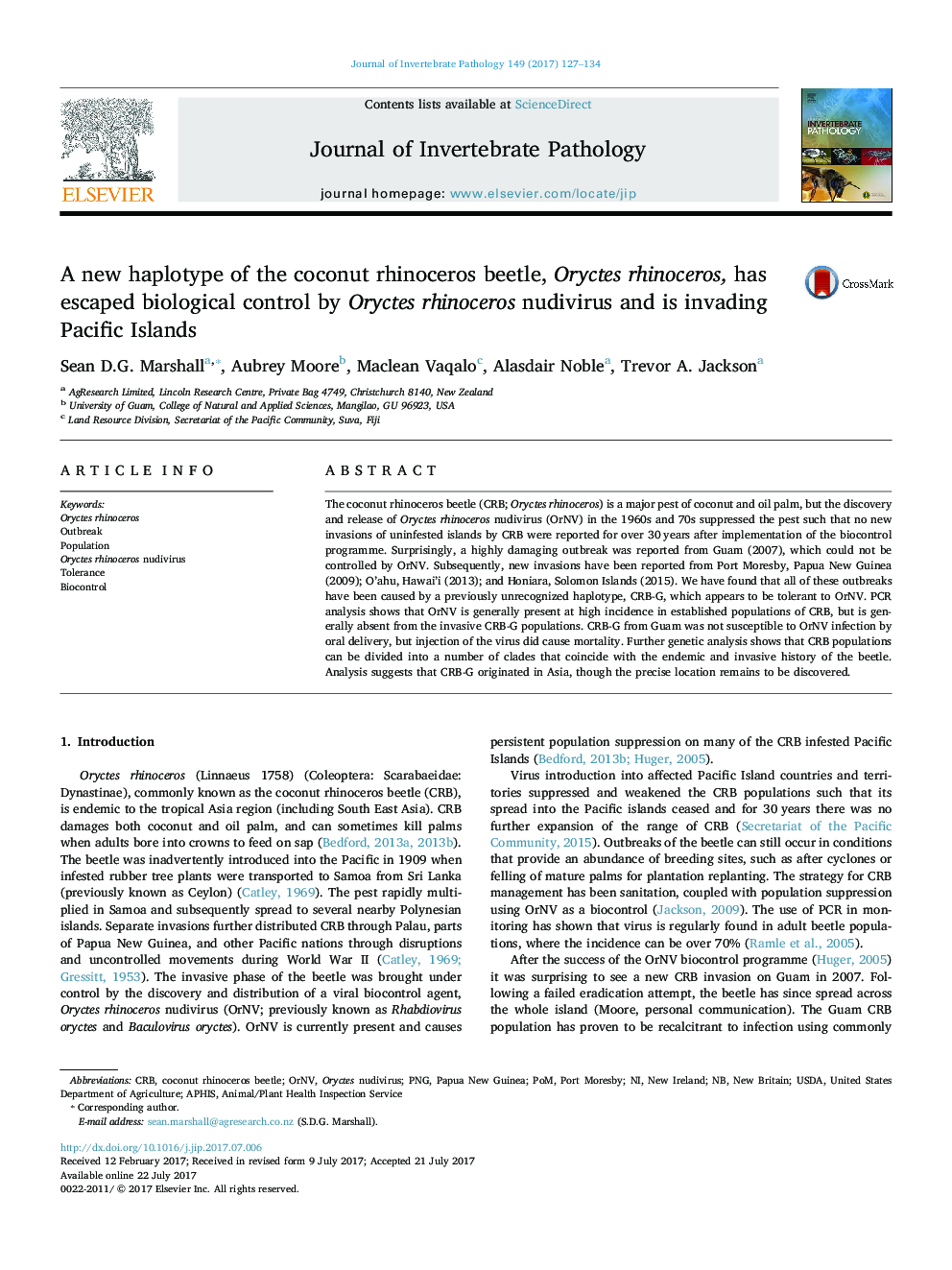| Article ID | Journal | Published Year | Pages | File Type |
|---|---|---|---|---|
| 5766939 | Journal of Invertebrate Pathology | 2017 | 8 Pages |
â¢Oryctes nudivirus (OrNV) has suppressed Pacific populations of O. rhinoceros (CRB).â¢A distinct O. rhinoceros haplotype (CRB-G) has invaded 5 Pacific islands since 2006.â¢Survey in Pacific and Asia revealed CRB-G is uncommon and usually virus-free.â¢CRB-G is resistant to oral infection by OrNV, but OrNV injection causes mortality.â¢Genetic analysis suggests CRB-G originated in South Asia.
The coconut rhinoceros beetle (CRB; Oryctes rhinoceros) is a major pest of coconut and oil palm, but the discovery and release of Oryctes rhinoceros nudivirus (OrNV) in the 1960s and 70s suppressed the pest such that no new invasions of uninfested islands by CRB were reported for over 30Â years after implementation of the biocontrol programme. Surprisingly, a highly damaging outbreak was reported from Guam (2007), which could not be controlled by OrNV. Subsequently, new invasions have been reported from Port Moresby, Papua New Guinea (2009); O'ahu, Hawai'i (2013); and Honiara, Solomon Islands (2015). We have found that all of these outbreaks have been caused by a previously unrecognized haplotype, CRB-G, which appears to be tolerant to OrNV. PCR analysis shows that OrNV is generally present at high incidence in established populations of CRB, but is generally absent from the invasive CRB-G populations. CRB-G from Guam was not susceptible to OrNV infection by oral delivery, but injection of the virus did cause mortality. Further genetic analysis shows that CRB populations can be divided into a number of clades that coincide with the endemic and invasive history of the beetle. Analysis suggests that CRB-G originated in Asia, though the precise location remains to be discovered.
Graphical abstractDownload high-res image (71KB)Download full-size image
